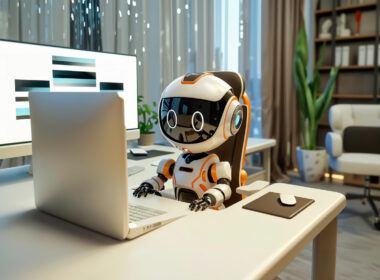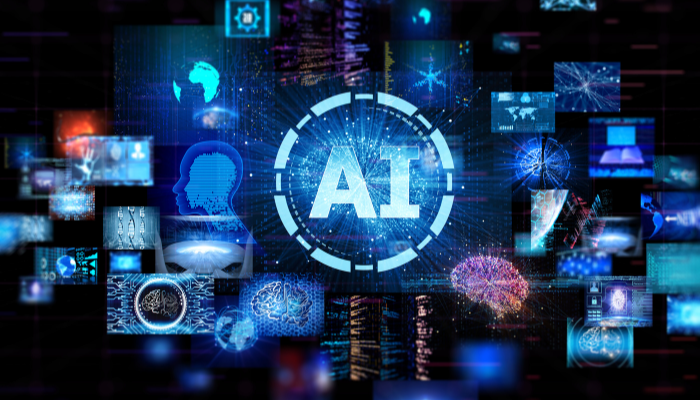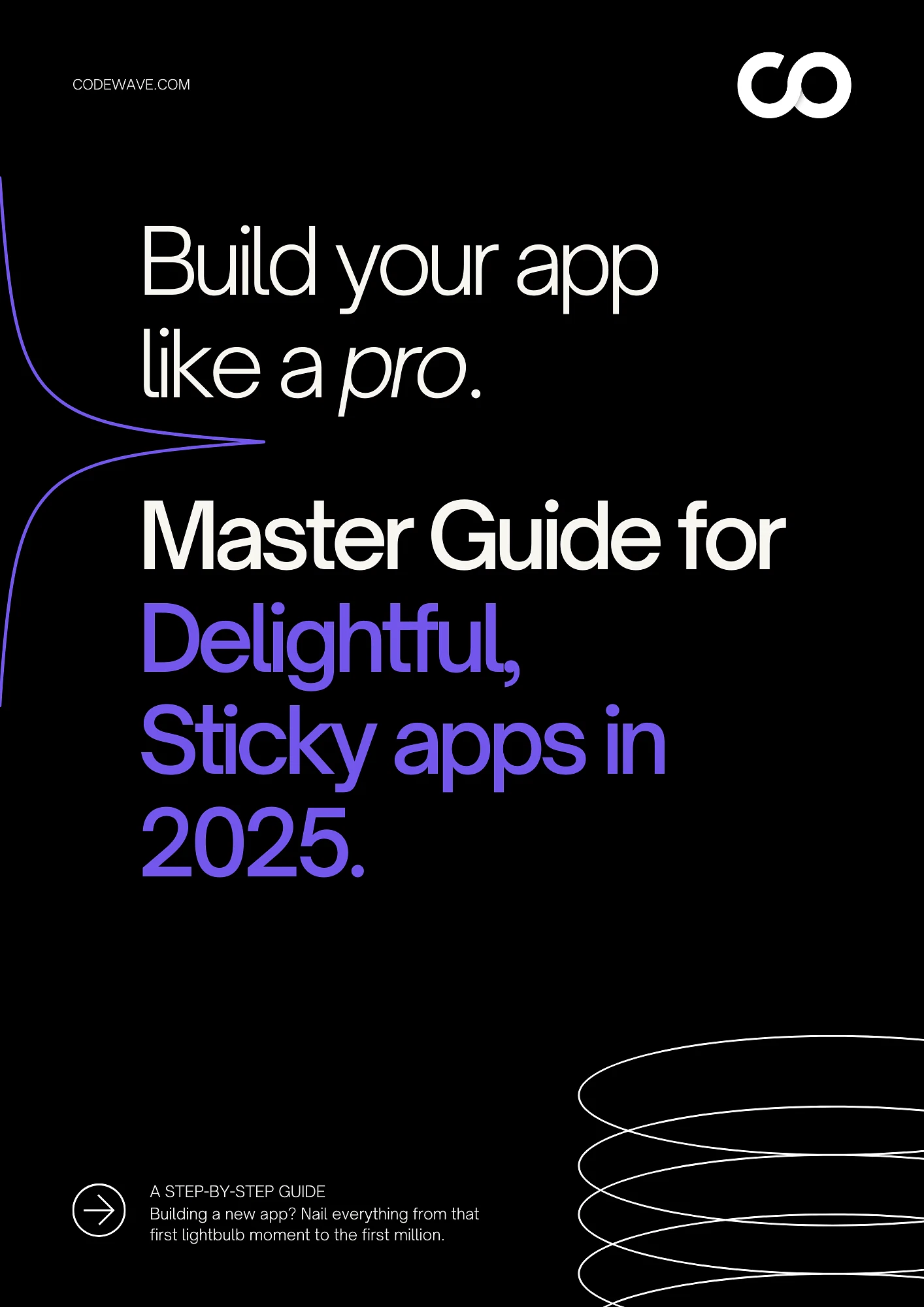Ever felt like your creative process hit a wall or wished you could explore endless design options in no time? Imagine having a tool that could whip up new ideas instantly and push your design limits. Well, you’re not alone. A McKinsey survey found that 71% of companies are already using generative AI to speed up their workflows.
Now, what if AI could help you with the boring stuff? It can handle things like idea generation, concept variations, and even refining prototypes. That means you can focus more on the cool, creative parts and leave the repetitive tasks to AI.
This blog will show you how to use AI in product design, making your process faster, cheaper, and more innovative. Ready to see how AI can shake up your design game? Let’s get into it!
How Generative AI is Transforming Product Design
Generative AI is making waves in the product design world, and it’s easy to see why. Think about how fast technology moves these days—designs are no longer limited to slow, tedious processes. Instead, AI is transforming the way products are created by offering new, efficient ways to experiment with ideas and bring them to life.
Let’s break down exactly how AI product design is reshaping the design process and why businesses are jumping on board.
What is Generative AI in Product Design?
Generative AI is like a creative assistant for designers. Instead of creating just one design, it takes your input—like materials, shapes, or aesthetics—and generates multiple variations in minutes. This speeds up the design process in ways traditional methods can’t match.
While CAD tools are still important, generative AI adds an extra layer of optimization. How to use AI in product design? It considers everything from material efficiency to the best shape for strength and appearance, refining designs autonomously, and giving you a more complete solution.
Why AI is Revolutionizing Product Design
Let’s get real about why product design in AI is such a game-changer:
- Speed
Say goodbye to the long hours spent refining a single design. AI can generate and test hundreds of variations in just hours. This cuts down your time from concept to prototype, so you can focus on perfecting your top ideas, instead of getting stuck on the details.
- Cost Savings
AI helps reduce material waste by optimizing every part of a product. It doesn’t just focus on the design—it also makes the production process more efficient. By helping you choose cost-effective materials and streamline manufacturing, AI can save your business a significant amount of money.
- Personalization
Customizing designs for individual customer preferences is now a breeze. Whether it’s adjusting the look of a product or adding personalized features, AI can easily make those tweaks based on user input. This lets you offer tailored products, improving customer satisfaction and helping you stand out.
- Innovation
AI pushes the limits of what’s possible in design. It quickly generates multiple variations, allowing you to explore new ideas and approaches. Plus, AI can spot emerging trends and suggest creative directions, helping you stay ahead of the competition.
- Optimization
AI doesn’t just create designs—it improves them. It continuously learns and optimizes its output, ensuring that your designs are as strong, durable, and resource-efficient as possible. This leads to high-quality products with minimal waste, perfect for businesses focused on sustainability.
Also read: Iconic Insights: Top Famous Digital and Industrial Product Design Examples
How AI Fits into the Design Workflow
If you’re worried that AI might replace human designers, don’t be. How to use AI in product design isn’t about replacing creativity—it’s about complementing your expertise. AI helps automate the time-consuming parts of the process, like generating variations or testing models. It works seamlessly with tools you already use, like CAD or 3D modeling software, making your workflow smoother and more efficient.
And AI doesn’t stop there. It pairs well with predictive analytics, letting you foresee how a product might perform in the real world. This is where generative AI product design comes into play, helping you make smarter, data-driven decisions, reducing guesswork, and improving the overall quality of your designs.
Let’s dive into how you can start using it in your product design process, step by step.
How to Use Gen AI in Product Design: Step-by-Step Guide
So, now that you’ve seen how AI is transforming product design, let’s dive into how you can use both AI and Generative AI (Gen AI) in your own workflow. Don’t worry, it’s simpler than it sounds, and the benefits are massive.
- AI-Powered Ideation & Concept Generation
AI is your new brainstorming buddy. Tools like DALL·E, Firefly, and Runway ML use Gen AI to generate visual concepts in minutes. Instead of spending hours sketching or scrolling through inspiration, AI helps you create endless design possibilities instantly.
But AI isn’t just about random designs—it’s smart. It studies design trends, customer preferences, and even brand aesthetics to guide your creative direction. Whether you’re designing a product logo, packaging, or entire 3D models, AI ensures the concepts align with what people actually want.
Got a product idea that needs to be brought to life? We help turn your concept into reality with our expert idea of product service. From initial brainstorming to product launch, we guide you through every step of the development process, ensuring your vision is perfectly executed.
- AI-Driven Prototyping & 3D Modeling
Once you have a concept, Gen AI helps turn it into a prototype. Tools like Autodesk Fusion 360 and generative design platforms use AI algorithms to create optimized 3D models in seconds.
Gen AI simulates real-world conditions, testing stress points, material performance, and design feasibility before manufacturing. This minimizes trial-and-error, speeds up iterations, and reduces costs by perfecting your design before production.
- AI-Based Material & Structural Optimization
Choosing the right materials can be complex, but Gen AI simplifies the process. It analyzes product requirements and suggests materials that are cost-effective, durable, and sustainable. It can even generate new material compositions tailored for specific use cases.
For example, in aerospace, Gen AI has helped redesign airplane parts to be lighter and stronger by optimizing internal structures. This leads to more efficient, cost-effective, and high-performance products
- Personalization & Mass Customization with AI
Consumers expect personalized products, and Gen AI makes this scalable. Brands like Nike use AI to allow customers to design custom sneakers in real time, with AI refining their choices based on past preferences and current trends.
Gen AI can analyze user data to generate unique product variations, automate customization, and ensure a seamless production process. Whether in fashion, home decor, or consumer electronics, Gen AI-powered customization enhances user experience while maintaining efficiency.
- AI-Powered Testing & Quality Assurance
Testing is crucial in product design, and Gen AI enhances the process. It predicts potential design flaws, optimizes product durability, and simulates real-world usage scenarios.
By using generative testing models, companies can identify weak points, improve structural integrity, and refine their designs before production. This ensures higher-quality products while reducing the risk of recalls or defects.
Ever wish testing could be less of a headache? At Codewave, we take the stress out of QA with our expert QA Testing Services. We ensure your product performs at its best, catching flaws early and saving you time and money in the long run.
AI in product design sounds amazing, but it’s not all smooth sailing—let’s take a look at the bumps in the road and how to tackle them head-on!
Challenges of AI in Product Design: How to Overcome Them
Generative AI is transforming product design, but it comes with unique challenges. Let’s explore the biggest hurdles and how to tackle them effectively.
- Ethical Concerns & Copyright Issues
Generative AI pulls inspiration from massive datasets, but who actually owns the final design? This is a major gray area, especially with AI models trained on existing artwork and concepts.
Solution: Set clear guidelines for AI-generated work. If you’re using AI tools like MidJourney or DALL·E, check their licensing terms. Businesses should work with legal experts to ensure AI-created designs fit within their intellectual property policies.
- AI’s Dependence on Quality Data
Gen AI models rely on vast datasets, but if that data is biased or low-quality, the designs won’t be useful or accurate.
Solution: Invest in clean, high-quality data collection processes. Ensure that your datasets are diverse and free from bias. Regularly auditing and updating your data is key to improving AI’s effectiveness and avoiding poor design outcomes.
- Over-Reliance on AI Reducing Human Creativity
Gen AI can generate endless design variations, but it lacks human intuition. Relying too much on AI can lead to generic, uninspired designs.
Solution: Treat AI as a collaborator, not a replacement. Use it to spark ideas, create multiple iterations, or refine design elements, but keep human designers in charge of the final creative decisions.
- Bias in AI-Generated Designs
If AI is trained on biased data, it will reinforce stereotypes and create exclusionary designs.
Solution: Continuously test AI-generated outputs for fairness and inclusivity. Involve diverse teams in training data selection and decision-making processes to minimize bias.
- Lack of Transparency in AI Decision-Making
Generative AI models often work as “black boxes,” making it difficult to understand how they generate designs. This reduces trust and usability.
Solution: Choose AI tools that provide explainable AI features. Ensure models offer transparency into how they make design decisions so human designers can interpret and refine results effectively.
Let’s be real—designing can be a whirlwind, right? That’s where Codewave steps in! We combine smart AI tools with UI/UX design to turn your concepts into reality, all while making your workflow faster, smoother, and more fun.
Best AI Tools for Product Designers
Ready to take your product design to the next level? AI tools are here to make your process faster, smarter, and more efficient. Here’s a closer look at the best AI tools you can use to supercharge your designs.
- Autodesk Fusion 360: Perfect for parametric design, this AI tool lets you explore design variations and optimize for performance, cost, and production efficiency.
- Adobe Firefly: AI-powered creative assistance that helps with color palettes, textures, and other visual design elements to speed up the creative process.
- Runway ML: Enhances your visual design by creating and editing images, making it ideal for refining product aesthetics quickly.
- Blender with AI Add-ons: Boosts 3D modeling with AI to generate textures, lighting, and optimized designs, saving you time in the design process.
- NVIDIA GauGAN: Transforms sketches into photorealistic images, helping you visualize product concepts with impressive detail.
- Shapr3D: A user-friendly tool for intuitive 3D modeling on iPads and tablets, perfect for designing on the go.
How to Choose the Right AI Tool
When selecting the right AI tool for your design process, consider:
- Cost: Evaluate your budget and choose a tool that fits your needs. Not all tools require a high price tag to be effective.
- Features: Pick a tool that has the features essential to your current design needs, whether that’s 3D modeling, creative assistance, or material optimization.
- Integration: Ensure the AI tool integrates smoothly with your existing software to avoid workflow disruptions.
Here’s a quick comparison of some top AI tools:
| Tool | Best For | Key Features | Price Range |
| Autodesk Fusion 360 | Parametric design optimization | CAD & 3D tools | Mid-High |
| Adobe Firefly | Creative design assistance | Color & texture generation | Mid |
| Runway ML | Visual design enhancement | AI for image creation | Mid |
| Blender | 3D modeling & rendering | 3D modeling & optimization | Free |
| Shapr3D | Intuitive 3D modeling | iPad/Tablet app | Low-Mid |
When choosing a tool, think about what’s most important for your design goals. Is speed a priority, or are you more focused on fine-tuning specific elements?
And if you’re looking for tailored AI development to suit your business’s unique needs, Codewave is a great choice.
The Codewave Edge: Why Choose Us for Generative AI Development?
At Codewave, we’re a Design Thinking-led digital innovation company that specializes in creating custom generative AI solutions. Here’s why our Gen AI development services stand out:
- Custom GenAI Tools: We develop tailored AI tools that automate complex tasks, helping you reduce design time and improve efficiency, resulting in faster go-to-market timelines.
- Conversational UX: Our AI-powered bots personalize interactions and continuously learn, creating engaging user experiences that improve over time.
- Automation: With intelligent AI solutions, we simplify processes, boosting productivity and minimizing human error, which ultimately drives cost savings.
- Predictions: Our AI tools analyze data and forecast trends, enabling you to make more informed decisions and stay ahead of the competition.
- Accuracy & Agility: Codewave’s solutions are built for precision, ensuring high-quality outputs that adapt to your evolving business needs.
- Scalability: We ensure your AI solutions can scale as your demand grows, maintaining top performance even during high usage.
With Codewave, businesses experience a 25% increase in design efficiency and a 30% faster product launch, all while enhancing scalability and reliability. Choose us for the generative AI solutions that grow with you.
And, don’t forget to check out our other services too!
The Future of Generative AI in Product Design: What’s Next?
Generative AI is already changing the game, and the future looks even more exciting. Let’s talk about where AI in product design is headed.
Emerging AI Trends in Design
- AI-Enhanced Creativity: AI is giving designers the freedom to explore ideas they might never have thought of. It’s like having a super-powered creative assistant that works with you, not against you.
- Personalized User Experiences: AI can analyze customer data and help you create designs that are tailored to their needs and preferences. This means you’re not just designing for a general audience; you’re designing for real people.
- Integration with VR & AR: Imagine using AI to create immersive design experiences where you can interact with your products before they even exist. VR and AR are making this possible.
- Automated Design Processes: AI can take care of repetitive tasks, which means you can focus on the creative and strategic parts of the design. More time for you to innovate!
- Sustainable Design: AI helps reduce waste by optimizing materials and energy use. It’s a win for your designs and for the planet.
Predictions for AI’s Role in Design
So, what’s next for AI in product design?
- Increased AI Integration: According to PwC’s 2025 AI Business Predictions, nearly half (49%) of technology leaders reported that AI is “fully integrated” into their companies’ core business strategies.
- Enhanced Design Efficiency: AI is expected to reduce time-to-market by 50% and lower costs by 30% in industries like automotive and aerospace, as companies adopt AI in research and development.
- Collaboration with Humans: The future is hybrid—AI and human creativity working together. AI can handle the data and analysis, while you bring the heart and soul to the design.
- Smarter Consumer Insights: AI will help you understand what customers really want, so you can design products that hit the mark every time.
- Ethical AI Design: As AI becomes more powerful, the focus will be on using it responsibly, ensuring fairness and transparency in design.
Final Say
Generative AI is not just a buzzword—it’s something that can truly transform the way you approach how to use AI in product design. By bringing AI into your design process, you can work faster, be more creative, and make smarter decisions.
Think about it: AI tools can handle those repetitive tasks, giving you more time to focus on innovation. Whether you’re crafting user interfaces, prototyping, or even personalizing designs, AI helps you streamline your workflow, making everything smoother and more efficient.
As design continues to evolve, using AI isn’t just a nice-to-have, it’s becoming essential. Ready to take your design process to the next level? Explore how Codewave’s Generative AI solutions can help you get started today!
Also read: Top 10 Product Design Companies to Work With In 2024
Codewave is a UX first design thinking & digital transformation services company, designing & engineering innovative mobile apps, cloud, & edge solutions.







